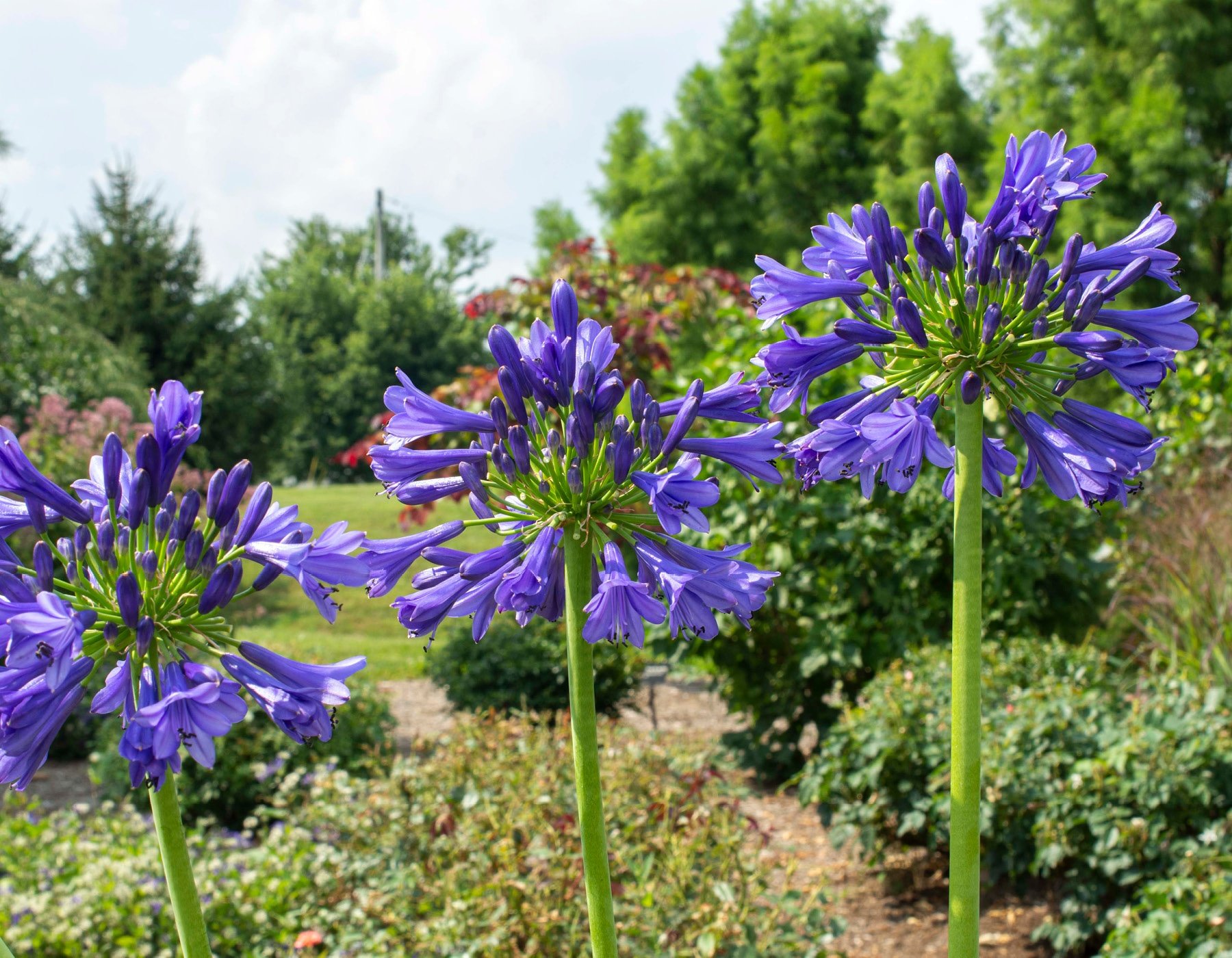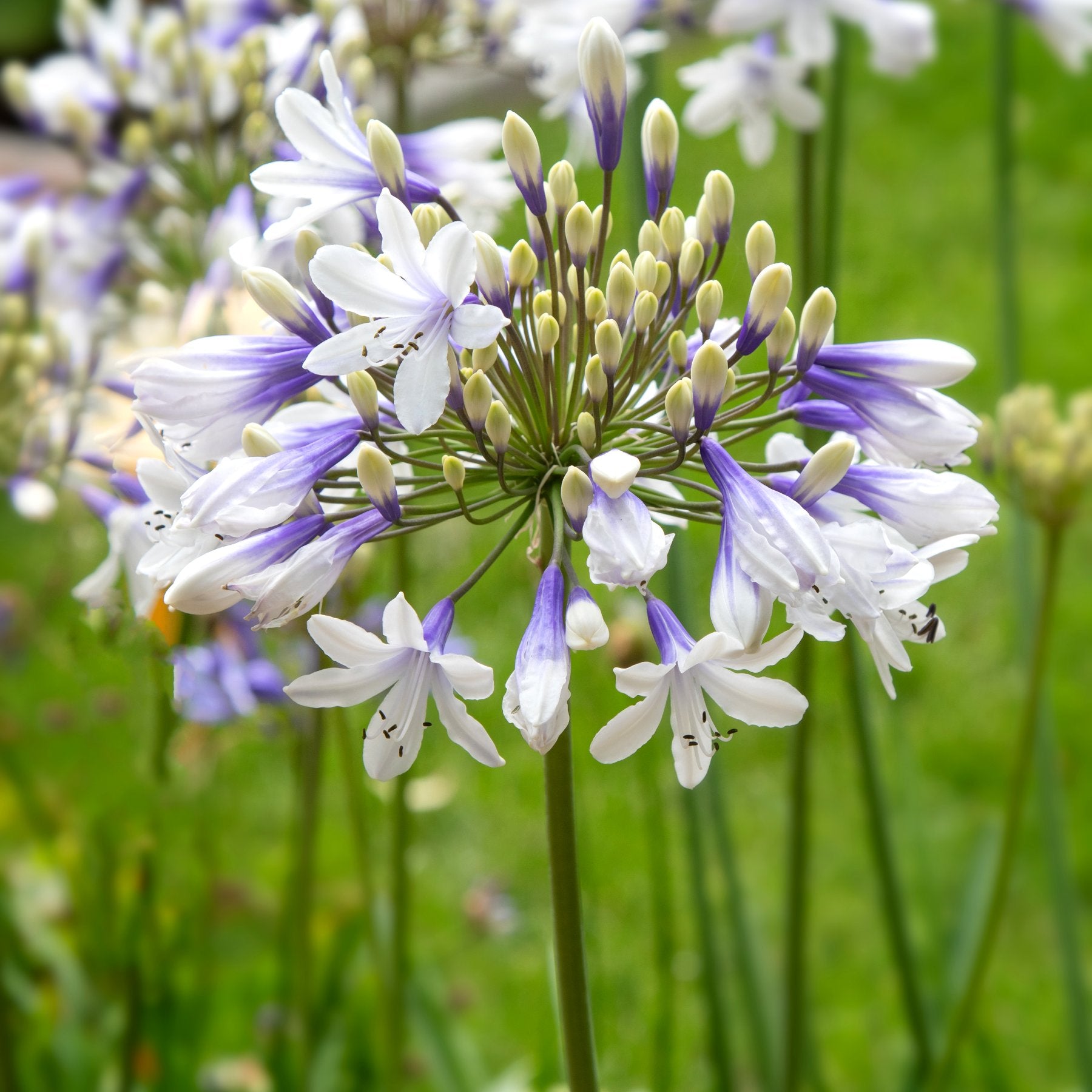Expanding Agapanthus: A Total Guide to Beautiful Blooms
Expanding Agapanthus: A Total Guide to Beautiful Blooms
Blog Article
Releasing the Secret to Effective Agapanthus Cultivation: Tips and Techniques for a Flourishing Garden
In the world of gardening, cultivating agapanthus efficiently requires a critical method that incorporates different facets of plant care. By recognizing the nuances of agapanthus growing, one can produce a setting where these plants thrive and bloom generously.
Growing Agapanthus: Ideal Practices
When planting Agapanthus, correct soil prep work is important for making sure effective development and growth of these gorgeous flowers. Agapanthus, frequently referred to as Lily of the Nile or African lily, thrives in well-draining soil with a slightly acidic to neutral pH degree - Agapanthus. Before planting, it is essential to amend heavy clay dirts with raw material such as garden compost or peat moss to enhance drain and supply crucial nutrients for the plants
To grow Agapanthus, choose an area that obtains complete sunlight to partial shade, as this will certainly advertise healthy and balanced growth and abundant flowering. Dig a hole twice the diameter of the plant's root sphere and put the Agapanthus at the very same deepness it was formerly expanding. Carefully backfill the hole with soil, pushing down firmly to eliminate any air pockets around the roots.
Water the recently planted Agapanthus thoroughly and continue to keep the soil equally damp, particularly throughout the plant's energetic expanding period. Agapanthus. Applying a well balanced fertilizer once a month can additionally sustain the plant's growth and flowering. By complying with these finest practices for planting Agapanthus, you can create a spectacular display of these exciting blossoms in your yard
Suitable Dirt Issues for Agapanthus
For ideal growth and blooming success of Agapanthus plants, making certain the soil conditions are excellent is vital. Agapanthus prefers dirt that is rich in nutrients, so integrating a well balanced fertilizer throughout the expanding period can promote healthy and balanced development and dynamic blooms.

Watering and Fertilizing Tips
To make certain healthy growth and dynamic blooms, correct watering and feeding techniques are important for effective Agapanthus growing. Agapanthus plants profit from regular watering, specifically throughout the growing season. It is suggested to water deeply once a week, making sure the soil is wet but not saturated. Throughout hot weather or in pots, more constant watering may be needed to avoid the dirt from drying out completely.
When it pertains to feeding Agapanthus, a balanced plant food with equal components nitrogen, phosphorus, and potassium can be applied in the spring to advertise healthy and balanced growth and blooming. Slow-release fertilizers are excellent for supplying nutrients gradually over an extended period. Stay clear of over-fertilizing, as this can lead to excessive vegetation growth at the find out here now expense of blossoms.
Additionally, incorporating raw material like garden compost right into the soil can boost nutrient levels and boost soil structure, helping in the general health and wellness of the Agapanthus plants. By adhering to these watering and feeding ideas, garden enthusiasts can guarantee their Agapanthus plants prosper and produce magnificent screens of flowers.
Pruning and Deadheading Strategies
Proper trimming and deadheading techniques play a vital function in maintaining the health and aesthetics of Agapanthus plants, complementing the essential techniques of watering and fertilizing for effective farming. Trimming Agapanthus involves removing invested blossom heads, dead or yellowing fallen leaves, and general shaping of the plant to advertise much better development. Deadheading, the procedure of getting rid of faded blossoms, this hyperlink not only improves the plant's look but additionally encourages additional flowering.
When deadheading Agapanthus, it is suggested to clip off the flower stem at the base making use of sharp, clean shears. This process reroutes the plant's energy from seed production back into origin and vegetation development, advertising a healthier and a lot more robust plant. Routine deadheading can prolong the flowering period of Agapanthus and avoid self-seeding, which can cause overcrowding.
In terms of pruning, Agapanthus typically gain from a light trim after blooming to clean up the plant and motivate fresh growth. Reducing the spent blossom stems and getting rid of any type of dead or damaged foliage helps keep the plant's vitality and total appearance. Nonetheless, it is important to stay clear of cutting into the crown of the plant, as this can damage its wellness.

Protecting Agapanthus From Pests and Diseases
Carrying out effective pest and illness monitoring approaches is important to guarding the wellness and vigor of Agapanthus plants in cultivation. Agapanthus are generally durable plants, yet they can still drop sufferer to different bugs and illness otherwise correctly looked after. One typical pest that affects Agapanthus is the Agapanthus borer, a caterpillar that passages right into the plant, causing damage to the flowers and leaves. To avoid infestations, normal inspection of the plants is crucial. If borers are discovered, they can be manually gotten rid of, or insecticidal soap can be used as a control step.
In addition to parasites, Agapanthus are vulnerable to illness such as root rot and fungal fallen leave spots. By staying cautious and resolving bug and illness concerns immediately, garden enthusiasts can aid their Agapanthus thrive and thrive.

Final Thought
Finally, successful cultivation of agapanthus requires appropriate growing methods, perfect dirt problems, adequate watering and fertilizing, routine pruning and deadheading, and protection from parasites and illness. By complying with these pointers and tricks, gardeners can guarantee a flourishing yard loaded with lovely agapanthus blooms. Agapanthus. Keep in mind to preserve regular care and interest to detail to advertise the health and wellness and durability of these stunning plants
When planting Agapanthus, proper soil prep work is vital for making sure successful development and growth of these lovely flowers.Water the newly grown Agapanthus thoroughly and proceed to maintain the soil equally this damp, particularly during the plant's energetic growing season.For optimum development and blooming success of Agapanthus plants, making certain the soil conditions are suitable is crucial. When planting or hair transplanting Agapanthus, make certain the dirt is well-prepared to offer the necessary foundation for the plants to develop themselves effectively. One common parasite that impacts Agapanthus is the Agapanthus borer, a caterpillar that tunnels right into the plant, causing damages to the leaves and blossoms.
Report this page